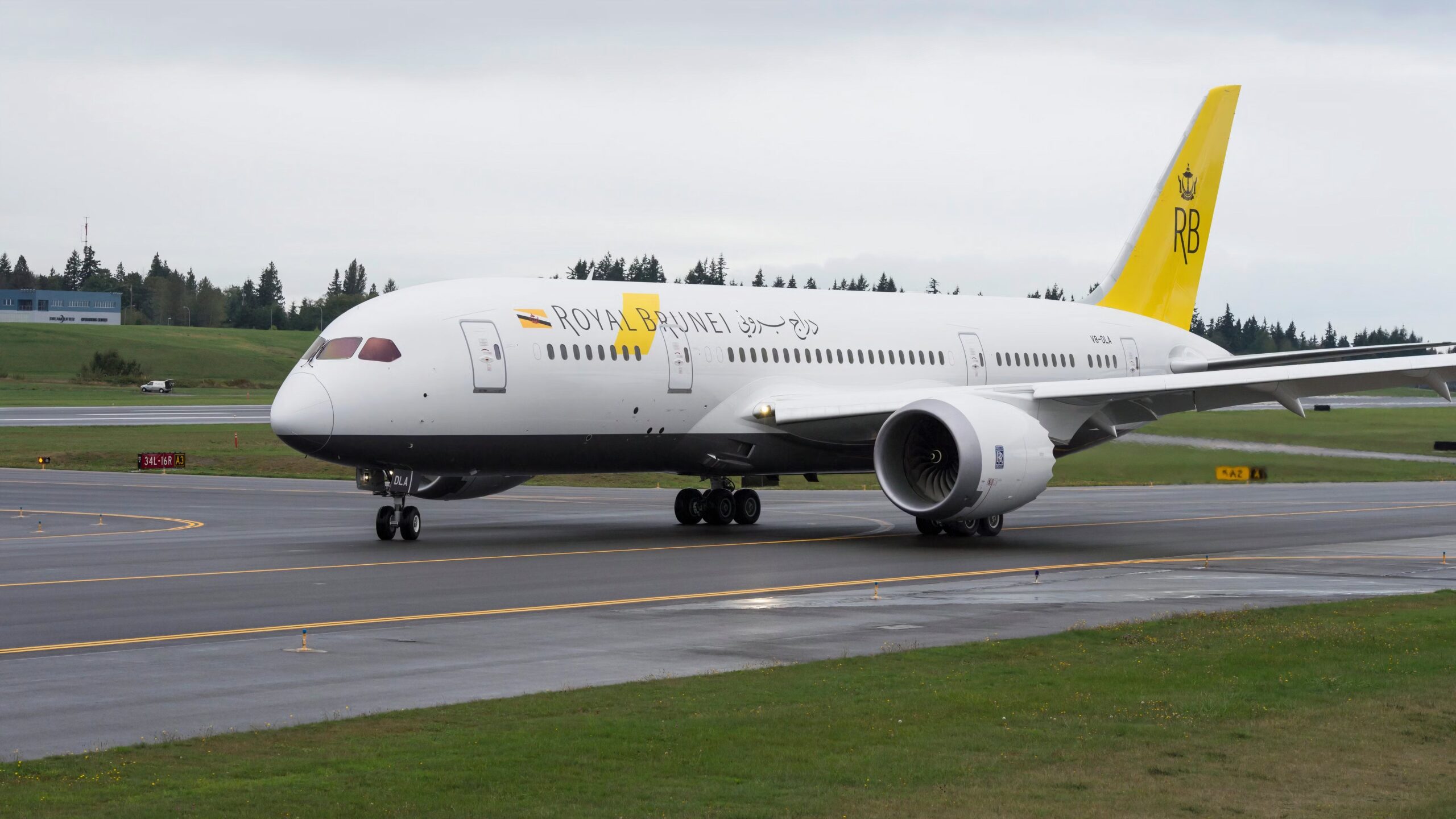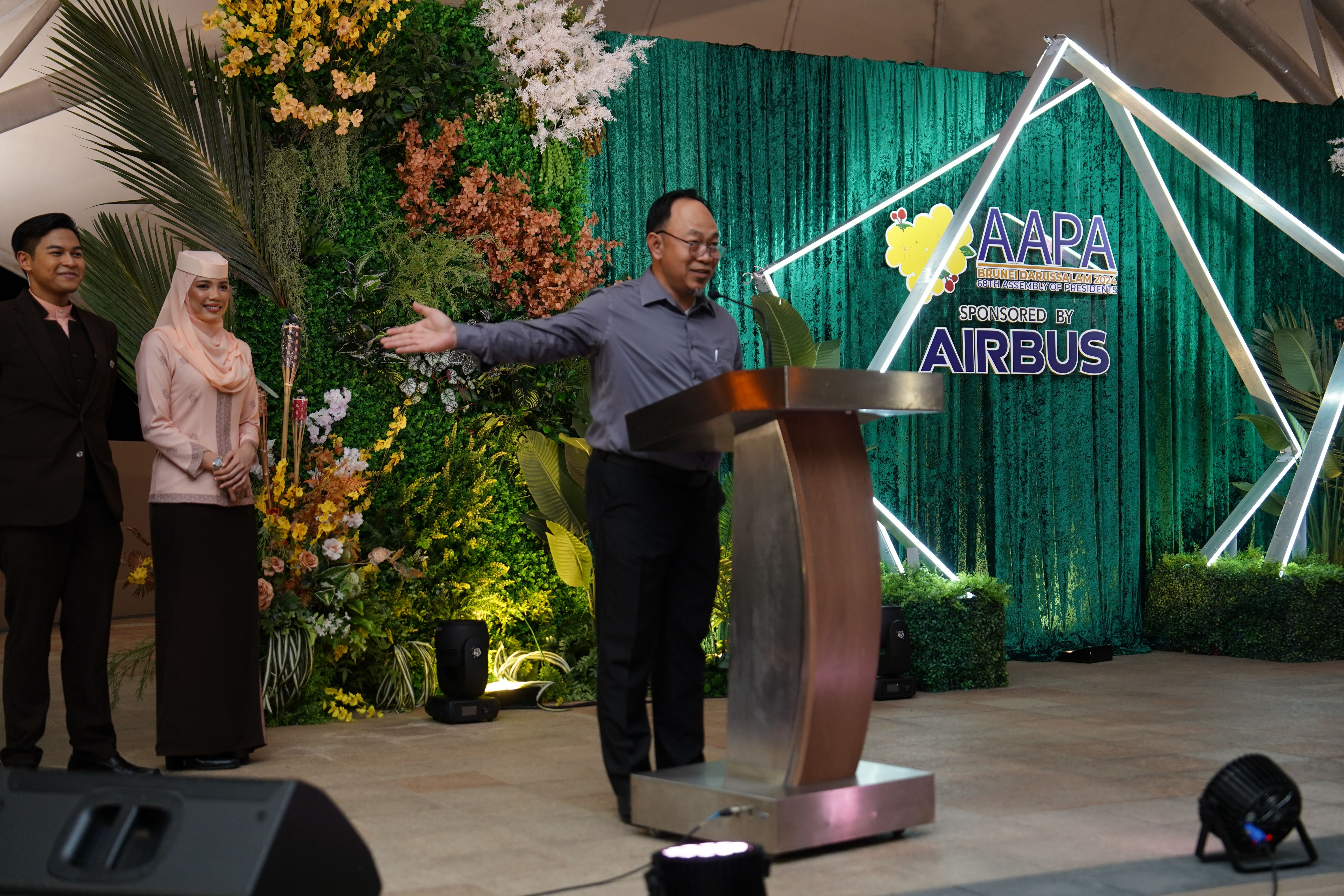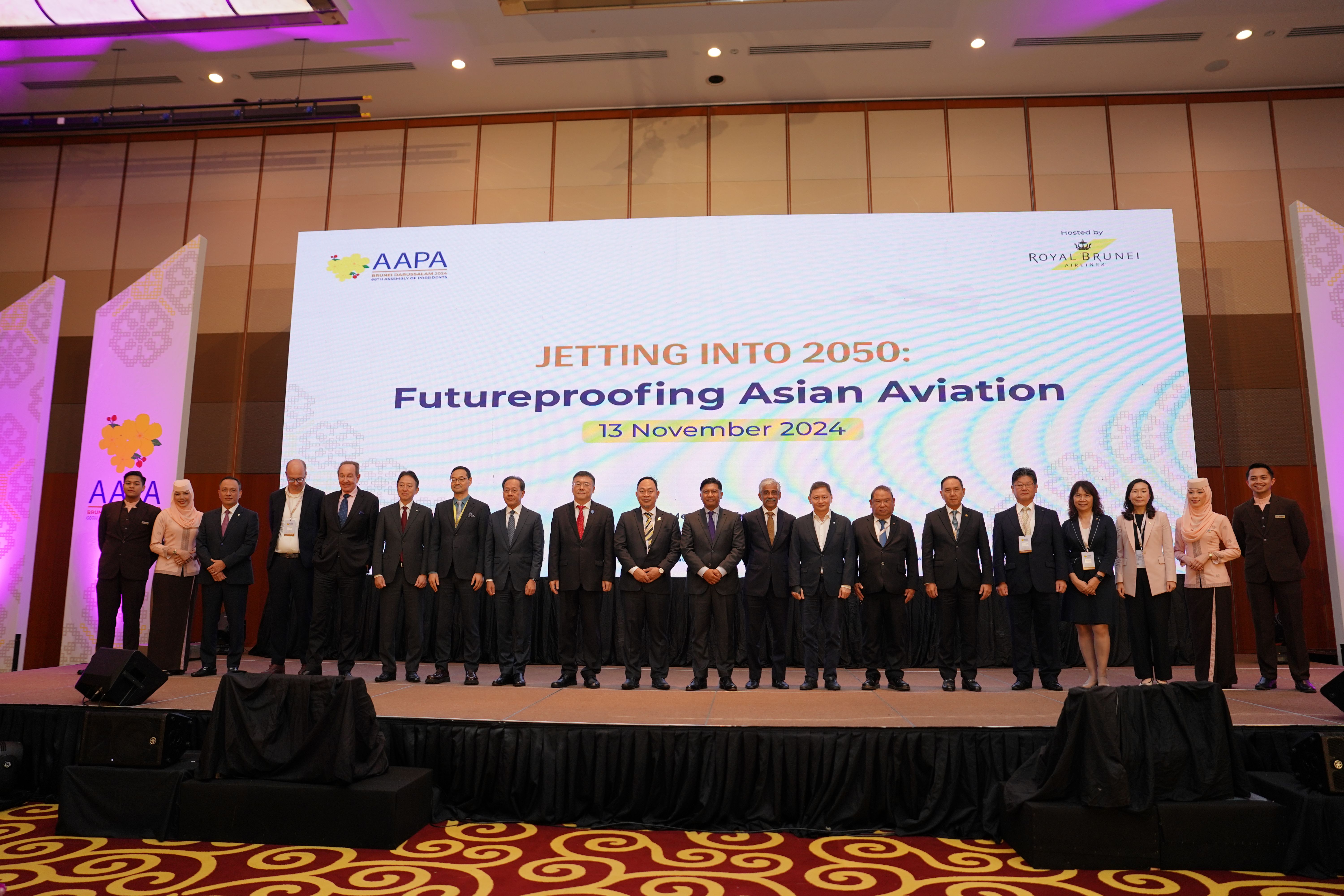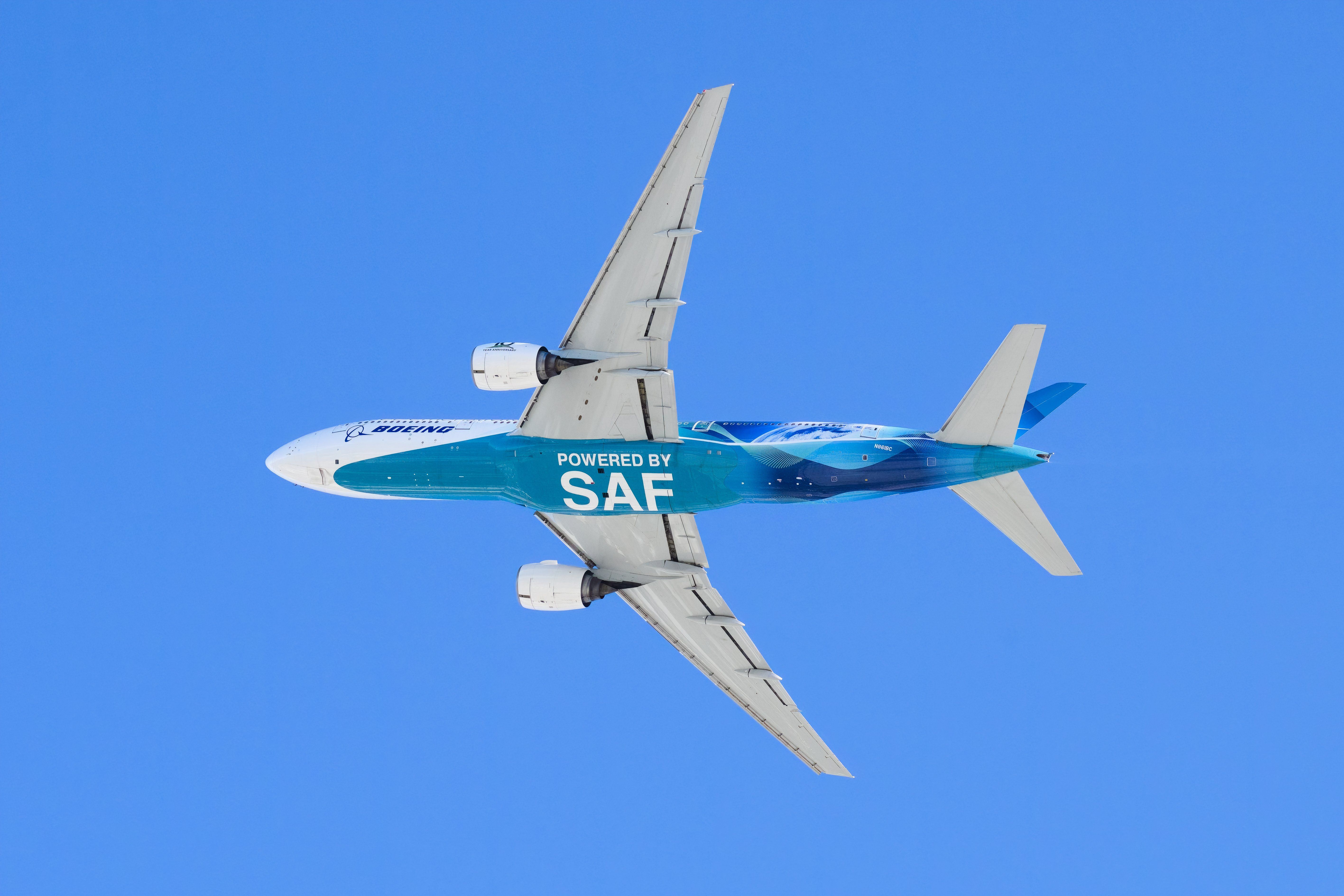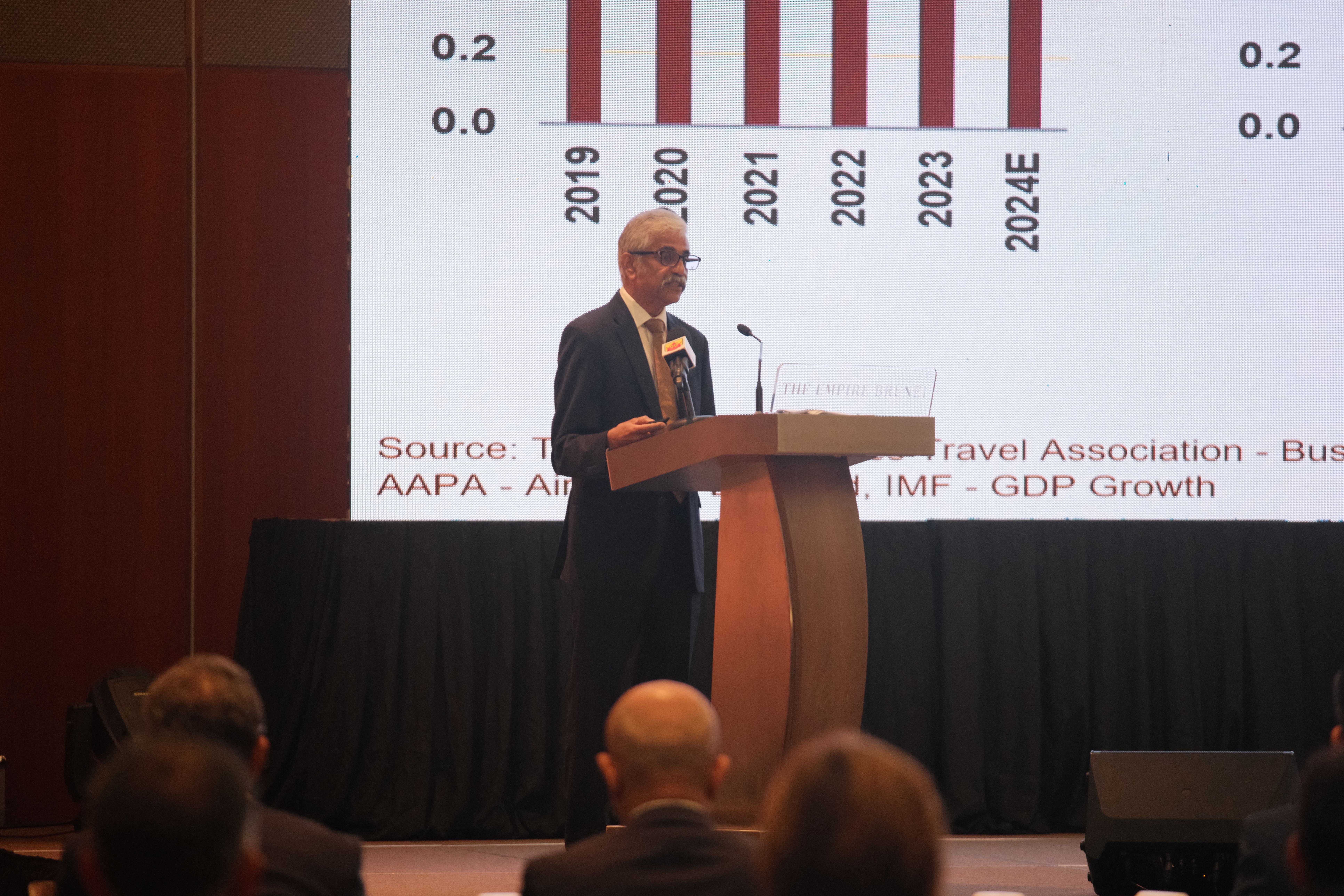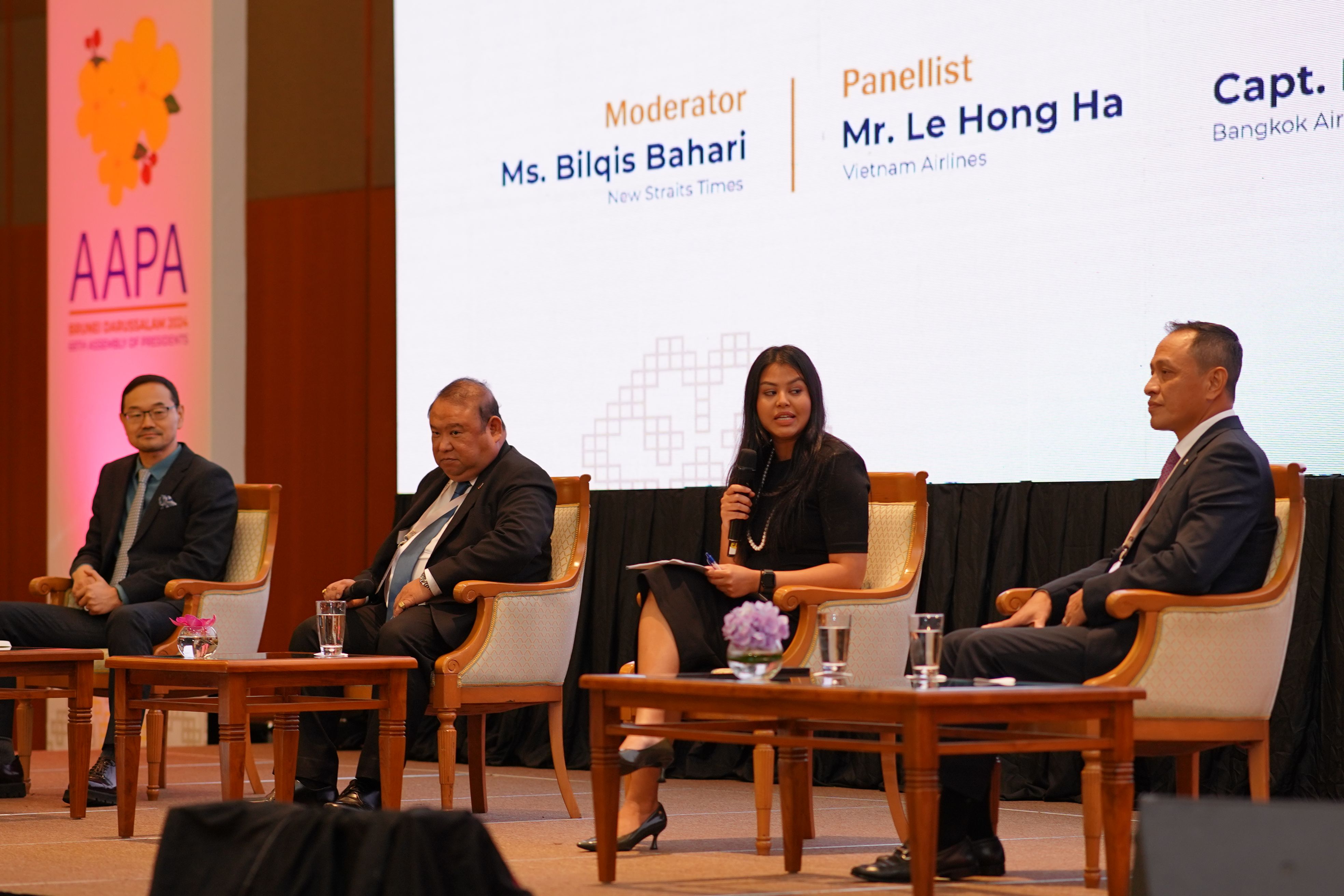This week, CEOs and leaders of Asia Pacific airlines gathered in Brunei for the Association of Asia Pacific Airlines 68th Assembly of Presidents, presented under the theme “Jetting into 2050: Future Proofing Asian Aviation.” With passenger numbers now exceeding pre-COVID levels, the leaders were optimistic about the future, although they were very vocal about the impact of ongoing supply chain disruptions.
Photo: Royal Brunei Airlines
The Assembly was hosted by Royal Brunei Airlines, and its CEO Captain Sabirin Hj Abd Hamid, and his team delivered a spectacular event that showcased Brunei and the importance of aviation to the Asia-Pacific region. It was also announced that a new member has joined the Association of Asia Pacific Airlines (AAPA), with Lion Air, the largest budget airline in Southeast Asia, now a member.
Aviation’s supply chains are broken
On Wednesday, the leaders met and passed a series of resolutions covering sustainability, aviation safety, and the streamlining of regulations. While not explicitly mentioned in the resolutions, the state of aviation’s supply chain sparked the most lively and passionate debate of the Assembly, with airline leaders highlighting its profound impact on their operations and demanding that action must be taken now to address the issue.
Photo: Royal Brunei Airlines
Sustainability and supply chains were recurring subjects over the two days, and it was during a panel session on Wednesday that the pain and passion of the breakdown in supply chain security hit center stage. The panel included Thai Airways CEO Chai Eamsiri, Air Astana CEO Peter Foster, Malaysia Aviation Group CEO Captain Izham Ismail and Singapore Airlines Group CEO Goh Choon Phong.
The OEMs need to do more of the heavy lifting
In essence, the four very experienced CEOs threw the onus back to the OEMs and pointed out that while airlines are not responsible for the supply chain issues with new aircraft deliveries, engines being taken off wing and maintenance and repair shortages, it is airlines that wear the blame and significant costs when schedules can’t be fulfilled.
Photo: Royal Brunei Airlines
For example, airlines face negative media and public criticism when flights are canceled, but these CEOs said the cause is often a lack of aircraft, engine unavailability or parts shortages totally out of their control. They want to see OEMs take control of their processes and find solutions by working with airlines and all elements within the aviation ecosystem, or as one put it, “less talking and more doing.”
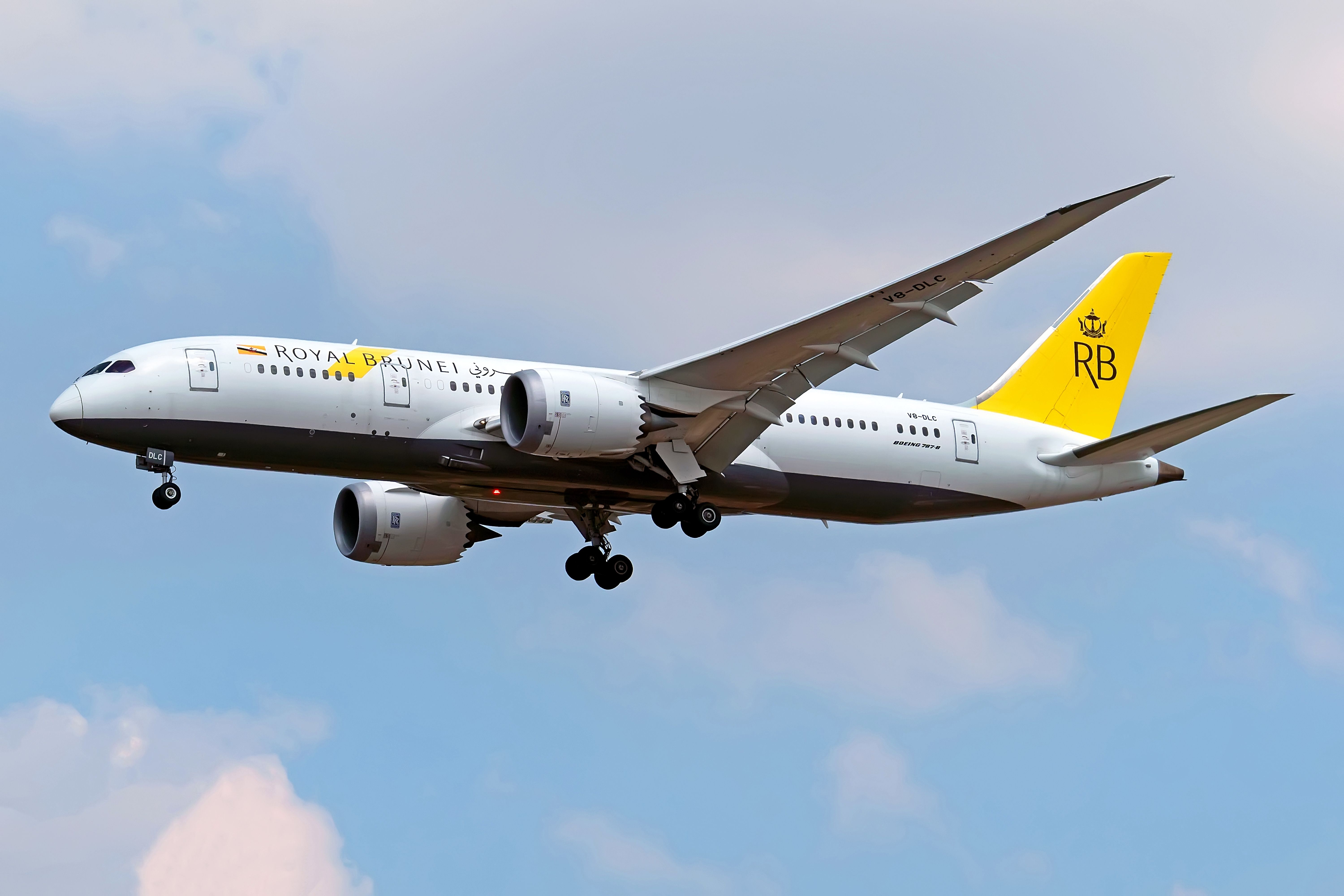
Related
AAPA’s Menon Says Asia-Pacific Airlines Doing A Remarkable Job
Asia-Pacific airlines have accelerated their recovery in 2024 and are rapidly leaving the pandemic in their wake turbulence.
The Assembly acknowledged that these disruptions, air space closures, component failures and labor shortages are leading to more flight diversions, delays and cancelations while also inhibiting future growth. Conflicts in Ukraine and the Middle East have closed airspace, adding to the problems, as do knee-jerk reactions by governments targeting only the symptoms of failure while burdening airlines with more cost and complexity.
The sustainability solution needs more than SAF
Asia-Pacific airlines are firmly committed to reducing their carbon footprint, and with extreme weather events on the rise, the leaders are acutely aware of the risks to aviation safety from climate change. With sustainable aviation fuel (SAF) in short supply, AAPA believes that a multi-prong strategy, in line with the ICAO net zero emissions reduction roadmap, is critical to meeting the net zero by 2050 target.
Photo: Ian Dewar Photography | Shutterstock
The Assembly passed a resolution calling on Governments, suppliers, air navigation service providers and airlines to deploy all aspects of the ICAO roadmap, namely SAF, breakthrough technology, CORSIA (Carbon Offsetting and Reduction Scheme for International Aviation) offsets and operational efficiency in pursuing the net zero emissions goal.
Photo: Royal Brunei Airlines
AAPA Director General Subhas Menon said that every new generation of aircraft and engine delivers 15-20% more fuel efficiency, and accelerating plans for new technology, carbon-friendly aircraft and propulsion systems is an effective pathway to follow.
“With delays in the delivery of new generation aircraft, airlines are extending the use of older equipment. A strategy that prioritizes technology alongside SAF is a surer route to carbon neutrality than one over-reliant on SAF.”
Airlines also adopted a resolution calling for civil aviation authorities, aviation safety agencies and airlines to work closely together to share best practices through data analysis and mitigate risks such as loss of control in flight. The resolution also called on all stakeholders to support adopting safety measures that address the most critical risk categories identified in the Asia-Pacific region.

Related
Asia-Pacific Airline Leaders Assemble As Covid Recovery Passes 100%
As aviation leaders gather in Brunei they will be pleased to see that September passenger numbers exceeded pre-pandemic September 2019 levels.
Government regulations are not the answer
The growing trend by governments to enact specific aviation consumer protection laws is concerning to airline leaders. The third Assembly resolution called on governments to refrain from introducing unilateral measures that would disproportionately inconvenience the traveling public and increase the cost burden on the airline industry while achieving limited benefits.
Photo: Royal Brunei Airlines
The AAPA leaders believe that imposing more stringent regulations on airlines paying more compensation to customers when flights are disrupted is only treating the outcome. Regulations already protect consumers, and adding more costs to airlines without ascertaining who and what actually caused the disruption is not productive and is simply unfair.
AAPA also called for greater recognition of the value of aviation to the global economy and closer collaboration amongst governments, industry, and service providers to streamline protocols for international travel.

